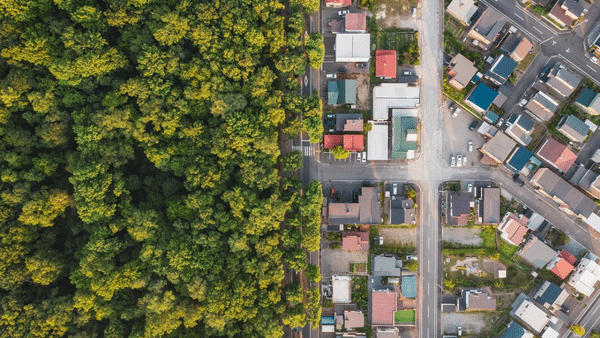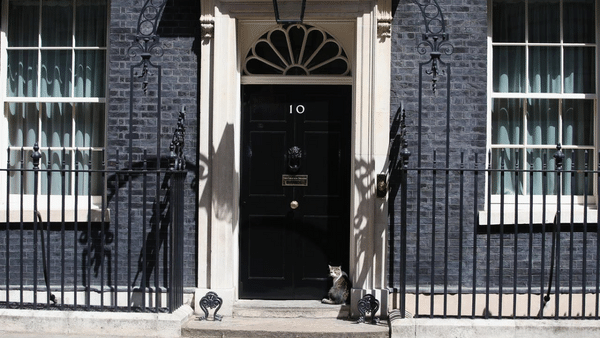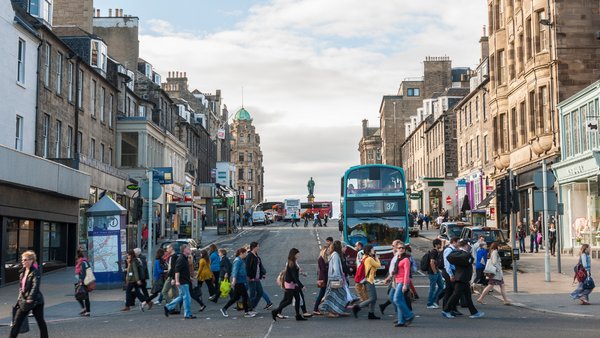It’s been a particularly rewarding few weeks for me, where I’ve had opportunities to learn much about the kind of role that social media can play, and is playing, in community organising - the approach to change that gained attention because of the key role it played in Barack Obama's own political development. (And was later embraced by David Cameron, to support the 'Big Society' agenda).
It’s been a particularly rewarding few weeks for me, where I’ve had opportunities to learn much about the kind of role that social media can play, and is playing, in community organising - the approach to change that gained attention because of the key role it played in Barack Obama's own political development. (And was later embraced by David Cameron, to support the 'Big Society' agenda).
Social media for social entrepreneurs
But before diving into community organising, I must mention two other recent social media events I found inspiring: firstly, a really enjoyable RSA Social Entrepreneurs Network breakfast (last Friday of every month, 9am, Gerard Bar, RSA) which focused on how to use social media effectively in social enterprises.
It was a great smorgasbord of experiences, challenges and insights - and even a kind offer (from Trudy Thompson) of a two-hour training session for interested Fellows on getting the most out of Twitter and social media.
IBM’s Global jams + and RSA ‘Digital Champions’

Secondly, Jemima Gibbons (of the Fellowship Council’s RSA digital engagement group) and I organised a first event for the growing network of RSA ‘Digital Champions’ - who are dedicated to moving the digital agenda forward at the RSA and helping Fellows to be more effective in using appropriate digital tools. (The 'Digital Champions' network is listed on this page. Let me know if you want to join the network).
The event (see Robin Houghton FRSA's blog report here) packed a room at the RSA and also involved ‘Digital Champions’ in Yorkshire, Rutland, Newcastle, Lincolnshire and even Boston, USA - all meeting up via video in an enjoyable Google Hangout. The speaker was IBM social media evangelist Stuart McRae - who talked about the ‘Blue IQ’ programme that empowered and inspired practical social media use across IBM.
‘Pretty early on we learned that what we were trying to do was manage a cultural evolution,’ said Stuart - who shared his experience with ‘Lunch & Learns’, BlueIQ Ambassadors, reverse mentoring of senior staff by Ambassadors, as well as the days-long buzzing global ‘IBM jams’ that bring together staff worldwide to look at key issues. Some jams have even been public.Jams are really powerful when they are used for cultural transformation, organisational transformation. A jam across all the Fellows is not inconceivable.
- Stuart McRae
‘Jams are really powerful when they are used for cultural transformation, organisational transformation’.
‘A jam across all the Fellows is not inconceivable,’ added Stuart.
Of course, he’s still trying to encourage further cultural shifts at IBM: ‘If a conversation doesn’t need to be internal, we’re trying to persuade people to consider having them externally’.
Social media training starts for 5,000 Community Organisers
In a fascinating development, the first 10 of the Government-funded ‘Community Organisers’ have started their 6-month training - as an optional module during the second 6 months of their year-long programme.
The aim is ‘to understand how a whole range of digital tools (from Skype, to the humble spreadsheet and “traditional” social media tools) can be used to make community organising more effective, more efficient and more impactful... in short, how can digital contribute to the task of the Community Organisers, which is moving a community to action around the things they care about,’ explains the course’s trainer Thom Townsend, of Izwe.
‘It’s not social media training as perhaps that’s generally understood,’ he adds, ‘rather we’re working with them to answer the question, “how does digital make you a better Community Organiser?”, so that can be anything from obvious social media skills to learning how to interpret and display community data or open data in ways their community would find useful, or would bolster their community organising work.’
‘For example, we’re exploring with one of the cohort how they can get data on community owned assets and display that the community to demonstrate the possibilities of creating a youth space in the town... ie linking an advocacy programme to open data.’
‘Digital and Social Media fit into the Alinsky-ite model - used by the Government’s Community Organising partner Locality/Re:Generate - to help speed up, strengthen and make more efficient the creation of the networks which feed through into offline action which is the key,’ Thom explained.
Locality itself calls their approach to supporting these 5,000 Community Organisers ‘a “forced organic” grown-from-the-ground approach’.
Izwe hope to be able to train a couple of hundred of the organisers over the three years of the programme.
Challenges include skills deficits, digital exclusion in communities and how the online work will continue after the year-long employment of each Community Organiser has ended.
Getting social media right in the fictional town of ‘Slapham’ - a workshop

A wide range of community organisers - including the RSA - recently came together for a well-crafted workshop (led by David Wilcox FRSA and Drew Mackie) to investigate how community organisers can make use of social media.
Rather than jumping in with the latest social media tools, the workshop first spent time developing rich pictures of the assets and challenges around the fictional town of ‘Slapham’, and of the community organisers being recruited in each of its four areas.
Your model needs to have the organisers emerging, not appointed by an external organisation
- Eileen Conn
It then moved to developing timelines for action in each area - and only then were online tools for listening, getting organised and building online communities chosen.
‘The main point is that in any situation it is best to consider the context, the purpose you are trying to achieve, the people who will be involved, and only then the nature of the processes and methods that may enable action,’ explained David Wilcox in a comprehensive blog post about the workshop.
‘Otherwise you may jump to the latest shiny tool. We describe the process in detail in the book Social by Social,’ writes David.’
The accompanying discussions were illuminating - and challenging - too. Community activist - and complexity theorist - Eileen Conn MBE FRSA warned that the workshop risked depicting community organising as an ‘external intervention’.
‘Your model needs to have the organisers emerging, not appointed by an external organisation,’ she said. (RSA Fellowship Councillor Tessy Britton has blogged about her concerns that the UK government’s approach to community organising may be an ‘Old Power’ approach and has suggested her own post-Alinsky ‘Rules for New Radicals’, which aim to avoid polarisation and demonisation. I particularly liked Andy Gibson FRSA’s comment that ‘Ebay has never launched a hate campaign against people who buy new products’.).
Community Organiser Mark Parker commented: ‘I don’t think it’s about the civic participation and engagement agenda, which gets lots of money - but how do we enable citizen-to-citizen relations to be enhanced and developed, how do we enhance the face-to-face.’
Facebook itself might be too ‘individualistic’ for some uses. And pro-social uses of social media are not always as easy as anti-social ones: You cannot motivate young people to use these tools for social good in the way they used them in the riots’, commented one participant.
The issue of differing motivations for social media use became a focus of discussion - which, for me, suggests a need for some solid research to uncover exactly how social media tool usage varies between citizens (and Community Organisers) with different motivations/values. (Researchers on values in communities/Big Society include Cultural Dynamics and The Campaign Company - I'll ask them if anyone has done this research.)
It was also agreed that the workshop would have been improved by including non-technology applications in its mix.
Social Networking Beneath the Radar
The Third Sector Research Centre (TSRC) has also been leading work looking at the use of social media by ‘unregulated’ micro-organisations, of which there are thought to be between 600,000 and 900,000.
A ‘kick start’ event they organised proposed actions such as:
‘Collaboration illiteracy’
At another TSRC event - ‘Social Media or Action Media?’ - it was interesting to hear from Jazz Rasool - a community organiser in North London - how 100 or so community groups share the Selby Centre in Tottenham - yet don’t actually collaborate with eachother.
He later told me how easy he had found it to map people and assets across Tottenham, using the free Batchgeo mapping tool. (In a similar vein, the joint organiser of the Slapham workshop, Drew Mackie, showed us an ‘asset map’ of Milton Keynes, which he had turned into an easy-to-use information system).
The Transition Town movement was also highlighted for its innovative use of social media (thanks to the inspiring work of people like Ed Mitchell).
Pitfalls were mentioned too: Francis Sealey (of GlobalNet21) pointed out how only 25-33 per cent of people who say they will turn up for a webinar actually do, compared to live meetings when it’s 50 per cent.
It will be fascinating to see where the different lines of work related to social media and community organising go in future - and what impact digital tools are able to have in our communities.
Matthew Mezey is RSA Online Community Manager. Twitter: @MatthewMezey. A live dashboard webpage showing RSA online activity is here.
Related resources
Digitally enabling the fictitious communities of Slapham
Event report by social reporter David Wilcox FRSA.
An illuminating post by Mark Parker, a Community Organiser based at Cambridge House in Southwark, London, where the ‘Slapham’ workshop was held.
Below the Radar Groups and Social Networking
Blog post by Francis Sealey.
From Chicago… to the RSA: two group facilitation methods to help you put an end to ‘aimless drift’
My look at two methods to help catalyse networks of Fellows: the Focused Conversation Method and the Consensus Workshop Method (which is getting increasing use in RSA circles).
Creating community around sources of free-food.
Hyperlocal blog, which has generated and supported a big increase in offline activity.
A public education project in New York aimed at making communities aware of the land resources around them, and how to use them for food etc.
Empowering Change Through Collaboration
PDF from Jazz Rasool.
Big Society: Mostly about the Tesco Riot and Hyperactivism
Tessy Britton presents her personal take on community organising. (Four more posts by Tessy Britton below).
The Creative Collaborative Paradigm
Big Society: Rules for *New* Radicals
Big Society: Power and Creativity, Saul Alinsky and Hilary Clinton
Big Society: Chicago's many community thinkers, connection and interruption
Related articles
-
Design for Life: six perspectives towards a life-centric mindset
Joanna Choukeir Roberta Iley
Joanna Choukeir and Roberta Iley present the six Design for Life perspectives that define the life-centric approach to our mission-led work.
-
Inventing meaning and purpose: a politics award for our times
Ruth Hannan
Ruth Hannah is inspiring you to submit your creative and courageous political project to the Innovation in Politics Awards 2022.
-
How can we cultivate healthier and happier communities?
Ella Firebrace Riley Thorold
How might we look to our futures and shape what it means to lead healthier and happier lives?




Join the discussion
Comments
Please login to post a comment or reply
Don't have an account? Click here to register.
After the riots in Tottenham last year I noticed how quickly people came to help one another but equally how quickly they dispersed once they had done their turn in the community.
I coined the term 'Collaboration illiteracy' to describe peoples inability to sustain the community collaboration spurred on by consequences of the riots. I saw many voluntary groups waving their respective flag rather than getting together with others and waving a much bigger flag.
Social Media could have helped turn this round. I used Social Media during the riots to keep locals informed of events as they were unfolding. The fact that I had proposed a social media driven community building initiative was laughed at by local social media guru types earlier in the 2011. Now, in June 2012, almost a year after the riots, the story is very different. Now the same kind of initiative, through Social Media training of Community Organisers is getting government sponsorship and the same people who were laughing at such an idea at the beginning of 2011 are grabbing at the funding and re-purposing their pet projects to get square pegs to fit into round holes.
My work as administrator of Haringey Community Circles centres on getting different groups to collaborate for the long term and not just for emergencies, a crisis or a scrap of funding the government has thrown their way.
I'm currently working with Haringey Council's Neighbourhoods Connect and Timebank Haringey to encourage volunteering to help residents become literate in Internet and Social Media as well as simply exchange time with one another to help serve one another. My community role 'emerged' from the community as opposed to being constructed to go into the community.
Many of the volunteers who I work alongside weren't hired by an external organisation, they have been long term advocates of community change driven by locals. An example is another group I am a contributor to, the Stop and Search Monitoring Group which independently monitors standards with which Police carry out Stops and Searches of the public, a topic that many cite as being a key cause of frustration that fueled last years riots. That kind of service only works because of its locally focussed experience and previous incremental lobbying and campaigning.
Collaboration Literacy is centred on face to face, local exchange of challenges, supportive resources and mutual reflection. When accelerated using Social Media and then harvested for offline, real world action, an improved community naturally begins to emerge. For those without access to Internet or Social Media, the reverse process has to be engineered -Real world action has to get people registered with email, Social Media and enable them to be Internet Literate. Then the communications can coordinate better real world collaboration and tangible, sustained short term interactions that eventually become long term shifts.